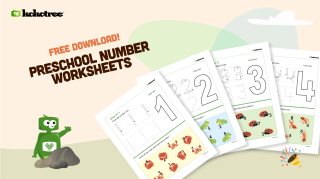
Welcome to our new blog post, ‘Tracking Your Child’s Phonics Progress!’ As a parent, you want what’s best for your child, including a strong foundation in reading skills. One essential building block for reading success is mastering phonics. That’s why we’re here to offer you evidence-based advice, tips, and solutions to help you keep track of your child’s growth in this crucial area. In this post, we’ll dive into various assessment tools and techniques you can use to monitor your child’s phonics progress, all designed to give you peace of mind and confidence in your little one’s learning journey. Let’s get started!
Tracking Your Child’s Phonics Progress
Monitoring your child’s phonics progress is essential for their reading development. To keep track of their growth, use a combination of formal and informal assessments. Formal assessments, like standardized tests or reading screenings, can provide a snapshot of your child’s progress at specific points in time. Informal assessments, on the other hand, provide ongoing insights through everyday activities such as reading aloud, playing phonics games, or writing assignments.
By combining these methods and regularly evaluating your child’s performance, you’ll gain a comprehensive understanding of their phonics skills and be able to address any areas that may need improvement.

Finding the Right Tools to Assess Your Child’s Phonics Progress
With so many resources out there, it can be challenging to find the right tools for tracking your child’s phonics progress. Let’s take a look at some popular options that parents and educators rely on to assess a child’s development in phonics.
Reading Screening Tests
Reading screening tests focus on a variety of reading skills, including phonics. Offered in many schools, these tests can give you an idea of how your child is performing compared to others in their age group. Be sure to chat with your child’s teacher about these tests and their results.
Phonics Worksheets and Assessments
Worksheets and assessments can offer a hands-on approach to practicing and evaluating your child’s phonics skills. You can find tons of worksheets online that target specific phonics skills, like letter sounds, blending, and segmenting. These resources allow your child to apply their skills while you identify any areas where they may struggle.
Informal Methods for Tracking Your Child’s Phonics Progress
Though formal assessments are valuable, informal methods can provide more personal and engaging ways to track your child’s progress. These alternative approaches allow you to observe your child’s phonics growth in their day-to-day life, making it easy to identify their strengths and weaknesses.
Reading Aloud
Carving out time for daily reading is not only an excellent opportunity for bonding but also an effective way to keep tabs on your child’s phonics abilities. While you read aloud with your child, take note of the words they struggle with or the sounds that need reinforcement. You can then focus on these areas through further practice and game-based activities.
Phonics Games and Activities
Using games and activities to improve phonics skills can make learning enjoyable for both you and your child. Board games, flashcards, and DIY activities focusing on phonics will not only foster a love for reading but also provide valuable insights into your child’s progress. As you play together, pay attention to how easily your child recognizes letter sounds, blends, and creates words.
Utilizing Technology to Track Your Child’s Phonics Progress
Modern technology offers a convenient way for parents to monitor their child’s progress in phonics. With the plethora of learning apps for kids, you can turn screen time into productive learning experiences.
Finding the Perfect Phonics Learning App for Kids
Before diving into the app store, consider what aspects of phonics you want to focus on and what type of learning experience will best suit your child. Look for apps that are highly rated and recommended by educators and parents alike. Some features to look for in a learning app include engaging visuals, age-appropriate content, customizable settings, and progress tracking.
Using these assessment tools, techniques, and resources, you’ll be well-equipped to track your child’s phonics progress and support their ongoing journey toward reading success. Happy learning!
Supporting Your Child’s Phonics Progress at Home
Now that you’re equipped with tools and skills to track your child’s phonics progress, let’s explore some ways to support and encourage their learning at home. By creating a positive and fun learning environment, you can make a significant impact on your child’s overall reading success.
Invest in Engaging Reading Materials
It’s crucial to nurture your child’s curiosity in reading by providing a diverse range of reading materials. Choose engaging books on various topics and genres that pique their interests. Opt for leveled readers to gradually increase the difficulty and challenge their phonics skills as they improve.
Encourage Writing
Writing goes hand-in-hand with reading, so helping your child practice their writing skills will strengthen their phonics abilities as well. Offer your child ample opportunities to express themselves through writing, with activities such as writing letters, journaling, or creating their own stories.
Establish a Consistent Reading Routine
Consistency is key when it comes to learning new skills. Establish a daily reading routine with your child to help them build their phonics abilities and foster a love for reading. Set aside dedicated time each day for reading aloud, independent reading, or listening to audiobooks.
Communicate and Collaborate with Your Child’s Educators
Maintain open communication with your child’s teachers and stay informed about their phonics progress in school. Educators can provide valuable insights and recommendations for activities, resources, and strategies to support your child’s learning at home.
Recognizing and Addressing Phonics Challenges
It’s natural for children to encounter challenges when learning phonics. As a parent, it’s essential to identify any potential issues early and address them promptly to set your child on the path to success.
Be Observant and Patient
Pay close attention to the areas where your child may struggle to fully grasp phonics concepts. Take note of recurring difficulties, such as blending or segmenting, and be patient as they work on improving their skills.
Consider Additional Support
If your child continually struggles with specific phonics concepts or falls significantly behind their peers, consider seeking additional support. This support may come in the form of extra help from their teacher or educational specialists, tutoring, or joining a supplemental phonics program.
By staying proactive and involved in your child’s phonics journey, you can ensure they develop the necessary skills and confidence to become successful readers. Remember that each child learns at their own pace, and with patience and encouragement, they’ll reach their full potential in no time.
Frequently Asked Questions
We understand that you may have some questions about tracking your child’s phonics progress and how to best support their learning. To help you out, we’ve compiled a list of common questions and answers related to the topic. Happy reading!
1. What is phonics?
Phonics is a method of teaching reading that focuses on the relationship between letters (graphemes) and their corresponding sounds (phonemes). It involves teaching children to recognize individual sounds in spoken words and blend them to read unfamiliar words.
2. At what age should my child start learning phonics?
Children can begin learning phonics as early as preschool, around ages 3-4. However, it’s important to remember that each child’s learning pace varies, and it’s never too late to start working on phonics skills.
3. Which assessment tools are suitable for younger children?
For younger children, consider using informal methods like reading aloud, playing phonics games, and observing their interaction with age-appropriate learning apps. Formal assessments like reading screenings and standardized tests may be more appropriate once your child starts elementary school.
4. How do I know if my child is struggling with phonics?
Signs that your child may struggle with phonics might include difficulty recognizing letter sounds, trouble blending sounds to form words, slow reading, and lack of confidence when reading aloud. It’s important to observe your child’s progress and seek additional support if necessary.
5. Can my child benefit from learning phonics if they have a learning disability?
Yes, children with learning disabilities can still benefit from phonics instruction. However, they might require additional support, modifications, or accommodations tailored to their individual needs.
6. How do I choose the right phonics learning app for my child?
When selecting a phonics learning app for your child, consider factors such as your child’s age, skill level, interests, and learning style. Look for apps with high ratings and recommendations from educators and parents, along with features like engaging visuals, age-appropriate content, customization, and progress tracking.
7. How can I supplement my child’s school phonics learning at home?
Support your child’s phonics learning at home by providing engaging reading materials, encouraging writing, establishing a consistent reading routine, and using games and activities to practice phonics skills. Communicate with your child’s educators to remain informed about their progress and suggested activities.
8. What can I do if my child struggles with vocabulary as well as phonics?
If your child struggles with both phonics and vocabulary, focus on strategies that build both skills together. Choose reading materials that expose them to new words, offer opportunities for writing, and use games and activities that reinforce both phonics and vocabulary knowledge.
9. How long does it take for a child to become proficient in phonics?
There is no set time frame for phonics mastery as each child learns at their own pace. Consistent practice, support, and encouragement will help your child progress smoothly through their phonics learning journey.
10. Are all phonics programs and resources the same?
No, not all phonics programs and resources are the same. Different programs may focus on various aspects of phonics or use different teaching approaches. It’s essential to research and choose the resources that best align with your child’s learning needs and preferences.
11. Can I teach my child phonics if I’m not familiar with it myself?
Absolutely! There are plenty of resources, including books, courses, and online materials, designed to help parents learn and teach phonics. Familiarize yourself with the basics and work together with your child on building their phonics skills.
12. How often should I review my child’s phonics progress?
It’s a good idea to consistently observe and review your child’s phonics progress through both formal and informal assessments. Regularly evaluating their performance will help you identify any areas in which your child may need additional support or practice.
13. How can I keep my child motivated to learn phonics?
To keep your child motivated, make learning phonics engaging and enjoyable. Use game-based activities, provide diverse reading materials, and celebrate their achievements. Encourage a love for reading and support their efforts with patience and positivity.
















